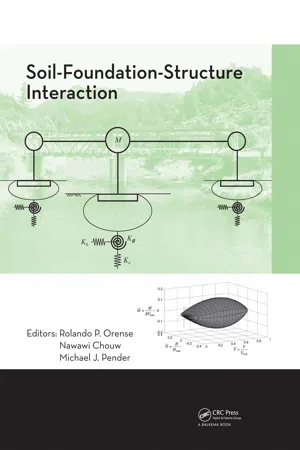
This is a test
- 260 pages
- English
- ePUB (mobile friendly)
- Available on iOS & Android
eBook - ePub
Soil-Foundation-Structure Interaction
Book details
Book preview
Table of contents
Citations
About This Book
Soil-Foundation-Structure Interaction contains selected papers presented at the International Workshop on Soil-Foundation-Structure Interaction held in Auckland, New Zealand from 26-27 November 2009. The workshop was the venue for an international exchange of ideas, disseminating information about experiments, numerical models and practical en
Frequently asked questions
At the moment all of our mobile-responsive ePub books are available to download via the app. Most of our PDFs are also available to download and we're working on making the final remaining ones downloadable now. Learn more here.
Both plans give you full access to the library and all of Perlego’s features. The only differences are the price and subscription period: With the annual plan you’ll save around 30% compared to 12 months on the monthly plan.
We are an online textbook subscription service, where you can get access to an entire online library for less than the price of a single book per month. With over 1 million books across 1000+ topics, we’ve got you covered! Learn more here.
Look out for the read-aloud symbol on your next book to see if you can listen to it. The read-aloud tool reads text aloud for you, highlighting the text as it is being read. You can pause it, speed it up and slow it down. Learn more here.
Yes, you can access Soil-Foundation-Structure Interaction by Rolando P. Orense, Nawawi Chouw, Michael J. Pender in PDF and/or ePUB format, as well as other popular books in Technology & Engineering & Civil Engineering. We have over one million books available in our catalogue for you to explore.
Information
Numerical analysis and modeling of SFSI
Aspects of soil structure interaction
W.D. Liam Finn
University of British Columbia, Vancouver, Canada
ABSTRACT: This paper offers a guided tour through the various ways of accounting for soil-structure interaction from analysis of the total soil-structure system to analysis of various approximate models of the system. The focus is on two types of structures, tall buildings with several levels of underground parking and bridges on pile foundations. The results of the analyses of approximate models are compared with “best model” solutions and recorded response data. The comparison provides insight on the more important features of soil-structure interaction and guidance on the selection of approximate models.
1 Introduction
This paper offers a guided tour through the various ways, used in practice, of accounting for soil-structure interaction in design and analysis, ranging from a complete analysis of the total combined system of foundation soil and structure to approximate models of the system. The focus is on two types of structures, tall buildings with several levels of underground parking and bridges on pile foundations.
When analysis of the total soil-structure system is carried out, the effects of soil-structure interaction (SSI) are implicitly included in the analysis and reflected in the results. No special consideration of SSI is required. However this type of analysis, while feasible, is rarely practical in practice because the structural analysis programs used usually by structural engineers cannot handle the nonlinear soil continuum directly. There are powerful commercial programs available that can do complete analyses but the learning curve is steep and long and the computational time too long for designers requirements except for special projects. Total system analysis is feasible but it is currently impractical in most cases. Therefore it is necessary to select simpler computational models of the system, uncoupled from the soil, and to include soil-structure interaction by approximate procedures for design.
2 Models for Tall Buildings
2.1 Most accurate model (MA)
An embedded tall building is shown in Figure 1.
The process of exploring what may be effective models of this structure starts with the construction of the most accurate computational model (MA) compatible with current structural software. The response of this model to the Northridge earthquake is evaluated to provide baseline response data against which the performance of various simpler models can bechecked. The MA model of the 54 storey building is shown in Figure 2. The models and findings presented in this section were all developed by Naeim et al, (2008).
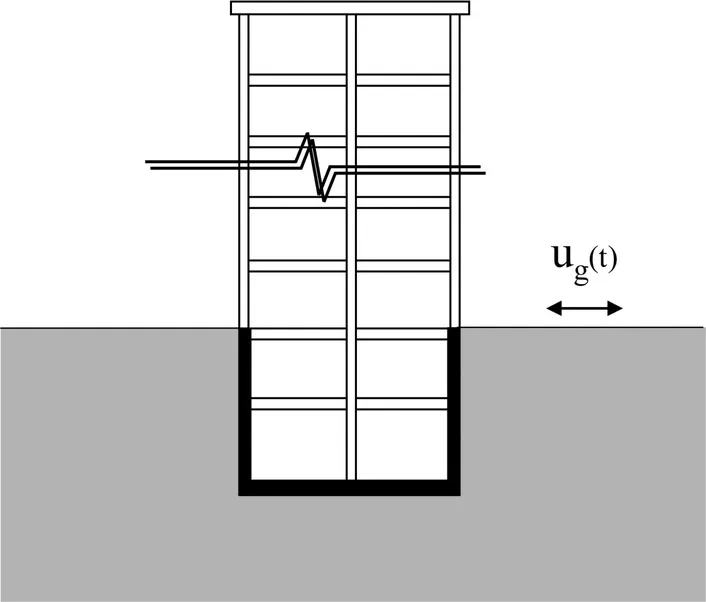
Figure 1. Schematic drawing of model of 54 storey building with several basement levels.
The action of the foundation soil against the basement walls is modeled by appropriate horizontal springs. The vertical and rocking stiffnesses of the base slab are modeled simultaneously by vertical springs with an appropriate distribution of stiffnesses.
Depth dependent free field ground motions are applied to the horizontal springs and the bottom of the base slab.
The response of the MA structural model to the Northridge earthquake was evaluated and the accelerations at different elevations in the building were compared with those recorded during the earthquake. The MA model was tuned to give good agreement with the recorded accelerations.
Many different simplified soil-structure models were tested but only 3 will be presented here to illustrate how simpler models tend to behave.

Figure 2. Most accurate model of 54 storey building.

Figure 3. Model #3c with no foundation interaction.
2.2 Approximate models
The simplest model (#3c) is shown in Figure 3.
The building is assumed to rest on a rigid base and is subjected to the free field surface motions. There is no interaction with either the foundation soil or the basement walls. The motion at the ground surface is used as input motion at the rigid base.
The performance of this model is compared with that of the MA model in terms of several different response parameters but, owing to space limitations the comparison is limited here to the inter-storey drifts ratios shown in Figure 4. For such a crude model the results are surprisingly good except in the basement levels where the inter-storey drift ratios are overestimated and near the roof where the drift ratios are underestimated.
The next model #3b (Figure 5) rests on a rigid base but some passive lateral restraint is imposed on the basement walls by springs. The ends of these springs are fixed in rigid vertical walls. Surface motions are used as input at the base.
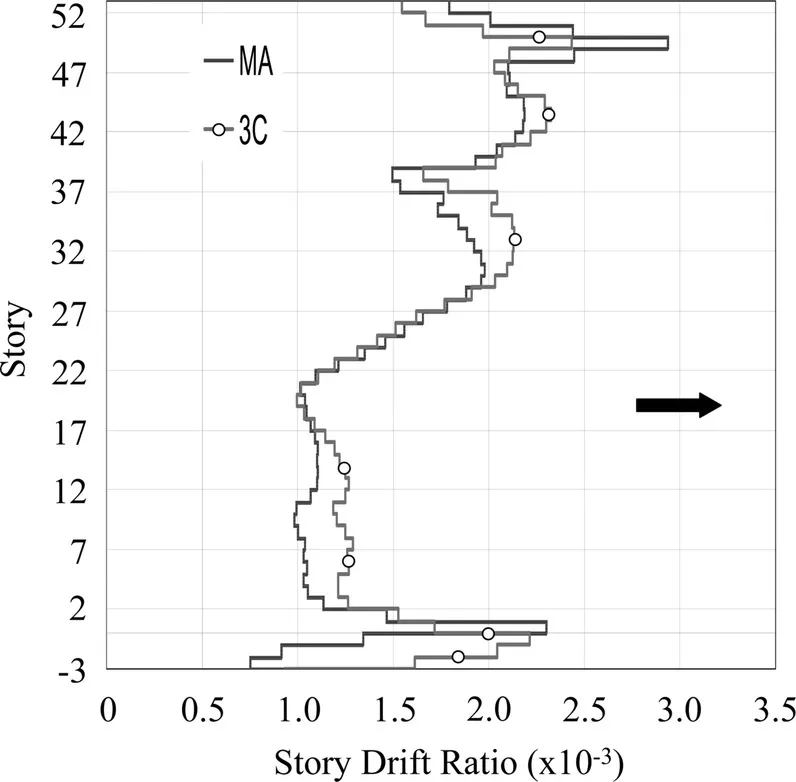
Figure 4. Drift ratios for models MA and #3c.
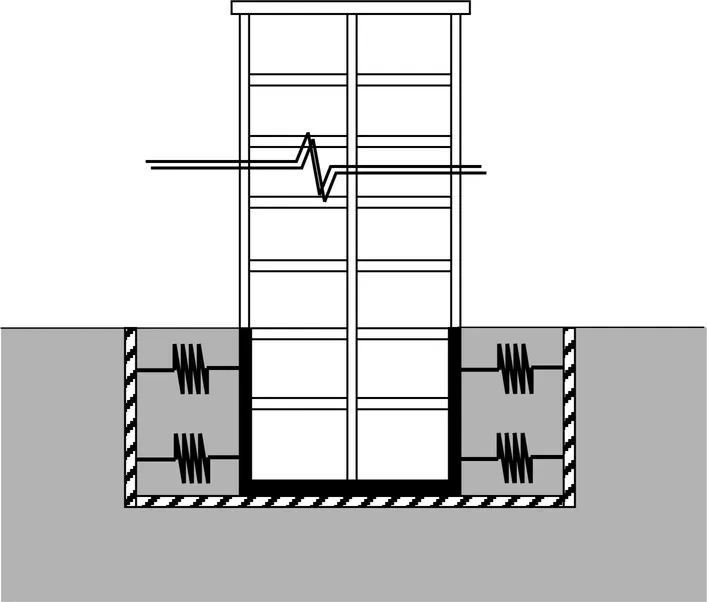
Figure 5. Model #3b.
The drift ratios of this model are compared with those of the MA model in Figure 6. Despite the introduction of some restraint on the basement walls to model the effects of the soil the drift ratios predicted by this model compare very poorly with the ratios from the MA model.
The last model to be considered is model #3d shown in Figure 7. In this model the free field ground motion is applied at ground level in the structure. The response of this model to the Northridge earthquake compares surprisingly well with the MA model as shown in Figure 8. However the drift ratios are overestimated by model #3d in the basement levels and underestimated near the roof.
2.3 Observations
Arbitrary selection of simpler models can be risky because the reliability of their response is unknown.
Furthermore it seems that the effectiveness of a simpler model depends on building characteristics such as the height of the building and so a model that works well for one building may not be appropriate for another. Behavior of simpler models has not been adequately checked for different building types to provide a data base to guide model development. The selection of the appropriate ground motions for input and the appropriate input location appears to be somewhat arbitrary also.
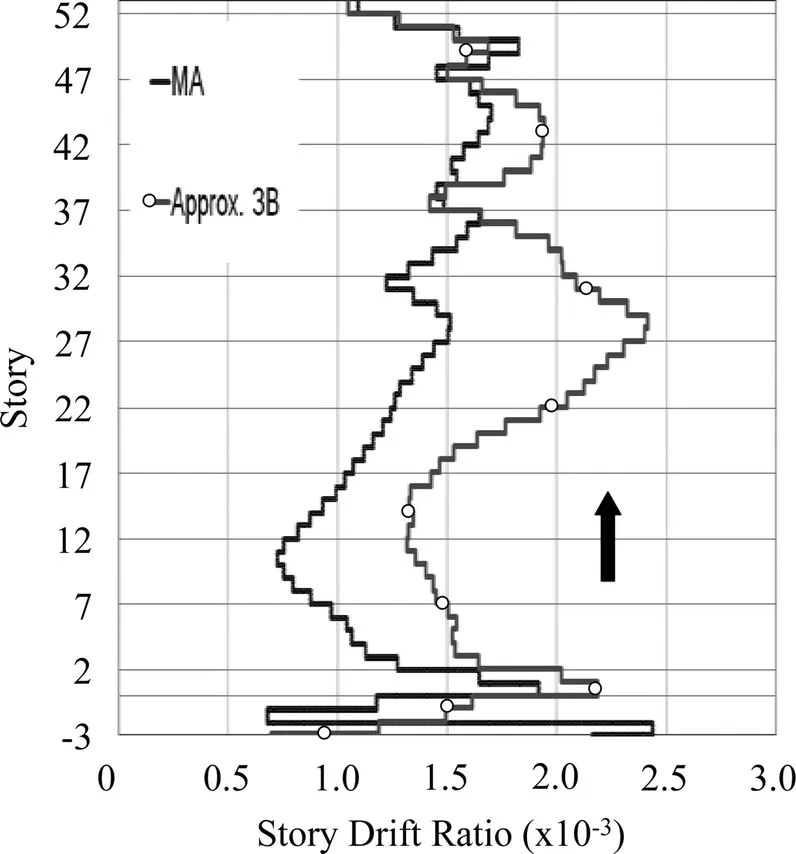
Figure 6. Drift ratios for models MA and #3b.
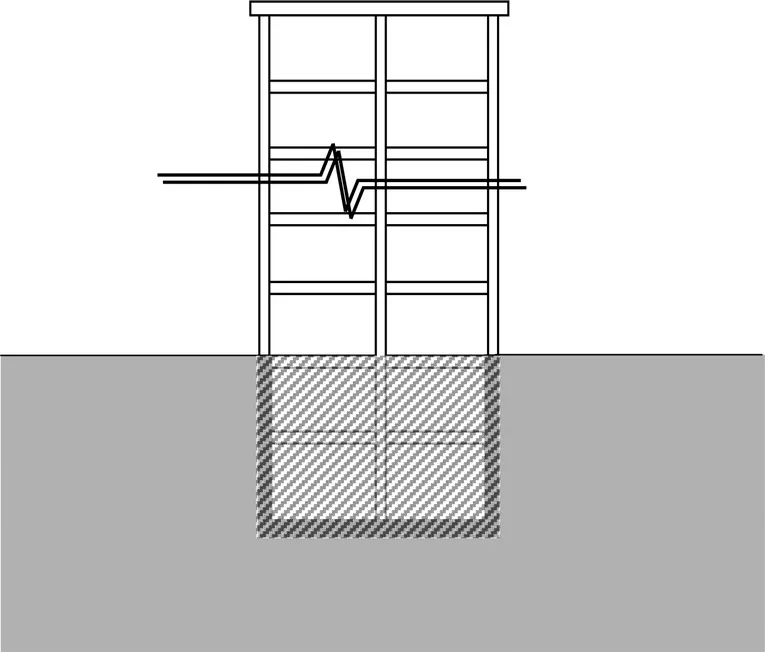
Figure 7. Model #3d.
3 Bridge Piers on Piles
3.1 Model...
Table of contents
- Cover
- Half Title
- Title Page
- Copyright Page
- Contents
- Photos
- Preface
- Acknowledgments
- Organising Committee
- Panel of Reviewers
- Understanding SFSI through experiments and case studies
- Numerical analysis and modeling of SFSI
- Towards improved SFSI design procedures
- Photos
- List of participants
- Author index